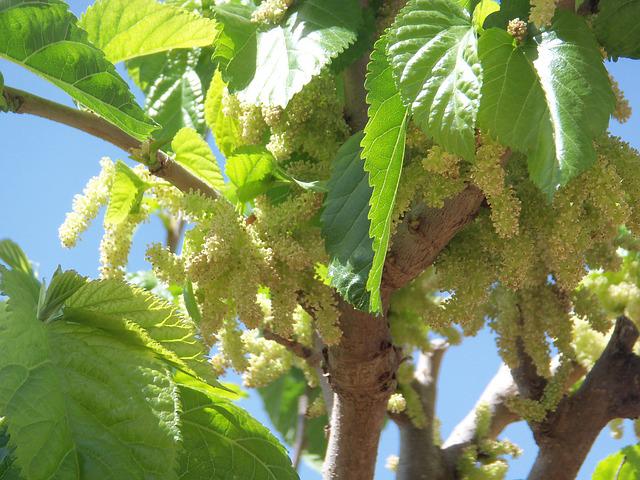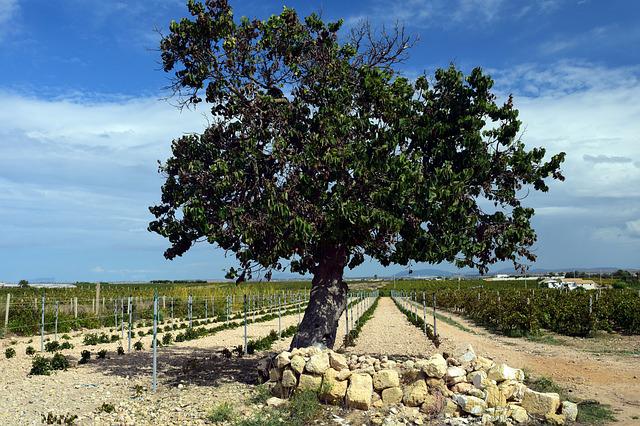How Often Do Mulberry Trees Produce Fruit?

It is true that they only make berries once a year when they start growing again in the spring. However, the berries can take a long time to ripen. Mulberry trees have a long growing season, which results in a plentiful crop. If you wish to grow mulberry trees for their fruit, you must exercise patience as it will take at least ten years for the trees to bear fruit. Fruiting can last anywhere from 6 to 8 weeks.
This type of fruit is about an inch long. When it’s not ripe, it’s white to green or pale yellow. When it is grown, it turns red or dark purple or black. These fruits, which have a sweet taste, are popular with both humans and birds. They are also used in many different recipes.
One that grows quickly and can reach 10–20 m tall. People think it is short-lived, but some trees are more than 250 years old. Some trees have fruits that are white when they’re done growing. Most of the time, the fruits are dark purple and about 3 to 6 cm long. The fruits are ready from mid-spring to late summer (depending on species and cultivar). Bright yellow leaves can sometimes be found on the leaves. Most leaves don’t have lobes, but some can. There are often lobes in the young growth.
Table of Contents
Planting Sites
Since the trees can withstand wind, drought, cold, and some shade, they’re suitable for planting virtually anywhere. Once established, the plant can handle a lot of salt. The fruit fall can last 6–8 weeks, and when the fruit is fully mature, it’s nearly impossible to harvest or consume all of the available fruit. So, it’s good to plant the tree in an area where the fruit will not be a nuisance. We built the pigs’ pen under half of our Mulberry tree, which also overhung the chicken coop, much to their delight.
Mulberry trees thrive in full sun but will grow in partial shade. Choose a location, preferably one that is wind-sheltered and away from buildings, underground pipes, or fences. It is recommended that trees be spaced at least 15 feet apart, with larger varieties up to 30 feet apart.
Due to the staining nature of mulberry fruit on concrete or decking, you may wish to select a location with the soil beneath the tree’s future canopy. Overripe fruit will fall from the tree, and there will always be a few strewn about. Summer sun bakes those splattered fruits onto any surface they come into contact with!
While container gardening is an option, it frequently results in poor fruiting due to the height restriction of around 6 feet or less. This may be a good idea to get your tree started before deciding on a permanent location.
Reproduction
It can be dioecious or monoecious, and sometimes the trees change sex to become monoecious or dioecious again. This year’s flowers are on short, green, pendulous catkins that hang from older wood and in the axils of this year’s new growth. The wind pollinates them, and some cultivars don’t need to be pollinated to make fruit. The White Mulberry is known for how quickly its pollen spreads. It sends pollen out at more than half the speed of sound!
Pollination
Some cultivars will produce more fruit if they are allowed to cross-pollinate. Many cultivars (monoecious types) don’t need cross-pollination at all. A lot of Mulberries can even make fruit without being pollinated. Wind pollinates plants.
When and How to Pick and Store Mulberries
Mulberry trees produce fruit that looks like a blackberry. White and red mulberries are ready to eat in late spring and early summer. Black mulberries don’t have a ready-to-eat crop until late summer. The berries have a mild taste that is both sweet and tart. They are good to eat on their own or to put in pies and cobblers. Pick them up as soon as the berries ripen and fall from the tree. Otherwise, birds might get to the berries before you can. Mulberries can be eaten right away or put in the freezer to keep them fresh.
When you’re under the strawberry bush, spread out an old sheet. Cover the ground under the branches of the mulberry with a large enough tarp to protect it from the rain.
To get ready to eat the ripe mulberries, grab the branches and shake them, so they fall on the tarp. To make sure the berries are ripe, do this every two to three days until they are.
Take the mulberries off of the tarp. You should not put more than four berries on top of each other in the collection bucket. The weight of the fruit will crush any berries in the bottom of the basket.
Put the mulberries that haven’t been washed in a storage container. Seal the container and put it in the fridge for three days. You can also freeze it. Before you use or serve the mulberries, wash them in cool water.
If you want to freeze the mulberries, wash them right away. Pat the berries dry with a clean cloth and put them in a freezer bag to keep them fresh. Seal the bag and put it in the freezer. You can keep it there for as long as three months.
Planting and Care
In many Florida landscapes, mulberry trees can be planted because they can thrive in sandy soils, is drought tolerant after establishment, and are moderately wind resistant. The best conditions for these trees are the full sun to light shade. Red mulberry trees in their natural habitat tend to grow in the shade of larger conifers.
Keep in mind that fallen fruit stains surfaces, so avoid planting over driveways, sidewalks, and patios when deciding on a location.
Mulberry trees are low-maintenance, requiring only minimal watering and fertilization after being established. Light pruning can be done when trees are still young to create a sturdy framework of branches. A mature tree’s wounds heal slowly, so you should only remove dead or damaged branches or limbs that cross each other when pruning. Mulberry trees have a milky sap that can cause rashes in some people, so be careful when pruning your tree.

